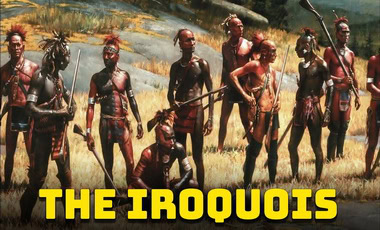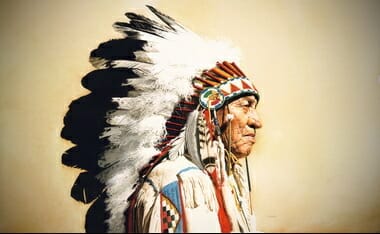HOW FREQUENT WAS SETTLER-INDIAN WARFARE?
In the popular mind, as in Silverman’s telling, the history of New England-Indian relations was one of nearly continuous, racially motivated slaughter. A Wikipedia page of “Indian Massacres of North America” provides details for most of the violent incidents that took place between settlers and Indians, defining a “massacre” as an event in which five or more disarmed combatants or noncombatants were slaughtered. Among the most egregious slaughters of seventeenth-century New England were the Pequot or Mystic Massacre of 163 7 and the Great Swamp Massacre of 1675.
The Mystic Massacre took place in the context of the Pequot War. It saw a group of Connecticut colonists under Captain John Mason besiege a Pequot village containing between four hundred and seven hundred civilians. They shot anyone who tried to escape. In the end, the Connecticut colonists and their Indian allies stormed the fort, slaughtering all inhabitants including men, women, and children.
Some thirty-eight years later, the Great Swamp Massacre saw a group of Connecticut colonists and their Pequot allies slaughter hundreds of Narragansett women and children. They had been staying in a fortified village with a natural moat, but winter temperatures froze the moat, enabling the colonists and Pequots to storm the Narragansett settlement. In this case, however, the massacre was not entirely one-sided; the colonists lost some 70 killed and 150 wounded, in a struggle whose alternate name is “the Great Swamp Fight.”
Despite the relative rarity of such massacres in New England history, they feature prominently in popular articles on Thanksgiving. Such portrayals are distorted from multiple angles. First, they are spun to represent one-sided instances of colonist-on-Indian aggression. Secondly, they are spun to appear unprovoked. Third, they are spun as though they were motivated by racial hatred and a desire for ethnic cleansing above all else, based on an underlying greed for land. And finally, they are spun as though this sort of thing was happening all the time—as though they were typical of and “stand for” early New England history. All four of these interpretations are false, or at least misleading.
The charge of continuous warfare is a highly embellished view of colonial New England history. According to William M. Osborn, who incidentally is cited on the “Indian Massacres” page referenced above, the total casualties of Indian-settler massacres between 1511 and 1890 were about 7,193 Natives who died at the hands of Europeans, and about 9,156 Europeans who died at the hands of Native Americans.100 Osborn’s account might well be undercounting the number of Natives who died in the California Gold Rush era, as we will discuss in a later chapter. But it’s important to remember that for all this talk of massacre, the numbers involved were surprisingly small. Not only this, but Osborn’s numbers make plain that Europeans were at least as much victims as perpetrators in the grand scheme of things. When you remember that we are discussing a period of some four centuries of conflict, then approximately ten thousand victims over four hundred years gives us an average of twenty-five massacred Indians per year, across an entire continent, over the entire course of colonial and American history. These massacres also tended to come in clusters, normally during outbreaks of war.
Not only this, but often—as in the case of both the Mystic and Great Swamp Massacres—the perpetrators were colonists and their Indian allies. In many cases, it’s next to impossible for anyone to say whether the majority of killings were carried out by colonists or by Indian warriors thirsty for revenge against their enemies. We have already seen how hundreds of eyewitness accounts attest to the brutality of Indian revenge killings, which often resulted in the assimilation or literal genocide of neighboring tribes. And certainly, when Indians and colonists were working together as allies during a time of war, to imply that slaughters perpetrated by the allies were “racially motivated” is farcical. As the historian James A. Warren reminds us, King Philip’s War in the 1670s helped to destroy a “fascinating… bi-cultural experiment in Rhode Island that [the colonist Roger] Williams and the Narragansett leaders had worked so hard to maintain.”101
The Indian wars of the 1670s destroyed decades of patient work, which saw both Indian and colonial leaders lay the foundations for a multiethnic society across New England. To pretend that destruction and division was one-sided and routine is to completely ignore the “lived experience” of thousands of New Englanders who wanted to create a multicultural society even in the seventeenth century.
As to causality, James Warren is at pains to point out that “the causes of the Great Swamp Fight were varied and complex.” Warren explains that this was anything but simple colonist-on-Indian violence; it had much more to do with local power politics and the self-interest of various Indian chiefs than an overriding civilizational conflict. As to the question of whether the Great Swamp Fight was a battle or a massacre, Warren points out:
one could make a decent argument for either, and in a sense, it was both. The casualty figures among the Puritans confirm that the Narragansetts put up fierce resistance, which, to my mind, makes the engagement a battle. The Narragansetts had good reason to expect an attack, given the general turbulence that prevailed at that time in southeastern New England. The burning and the killing of non-combatants that followed after the Puritans [and their Indian allies] gained control of the fort, however, could certainly be called a massacre.
When war did break out, it often took the colonists by surprise. The largest scale colonial-Indian wars typically began with surprise attacks by Indians, which saw reeling colonists scramble to orchestrate a response.
In Virginia, the year 1622 saw the Powhatan Indians precipitate a war on the colonists, beginning with a surprise attack. The Virginians had settled in widely dispersed farmhouses, often very near Indian settlements, and the two peoples were used to trading and socializing with one another. This is why the English proved so vulnerable to ambush and massacre. In this case the Indians, whose intent was nakedly genocidal, managed to kill 347 people—one-quarter of the entire English population of Virginia. After signing a peace treaty, the Indians broke the peace again in 1644, managing to massacre some 400 colonists in the process. Another peace treaty was signed with them in 1646, and many of their descendants still live in Virginia today.
In the Pequot War of 1636-37, the Connecticut colony suffered months of raids on military forts and stockpiles without declaring an offensive war against the Indians. Only after the Pequots killed several women and children at Wethersfield did the colonists ally with local Indians to bring an offensive war to the Pequots. This campaign culminated in the above-mentioned Pequot or Mystic Massacre, when a force of some 77 Connecticut militia and over 250 Native allies attacked and massacred a Pequot stronghold.
King Philip’s War in the 1670s also began with a surprise attack by Indians. It too resulted in the massacre of a large number of colonists. Like the Virginia colonists earlier, several generations of largely peaceful relations had taught the colonists that they had nothing to fear from their Indian neighbors; so the Massachusetts colonists had similarly settled in widely dispersed farmhouses that were vulnerable to Indian attack. In the series of massacres perpetrated in 1675-76, the death toll to the colonists was fully twenty-five hundred people —approximately one-third of the total population of New England.102
Both the Powhatan Wars of Virginia and King Philip’s War in New England were calculated gambles on the part of powerful chiefs who hoped to deal a knockout blow to the English, thereby driving them from their territory forever. This was similar to how Indian chiefs dealt with neighboring tribes with whom they had a major grievance, when they believed they had a sufficient military advantage. The responsibility for the decision to go to war often lay with individual chiefs, and the logic they used made sense within the context of their social milieu.
After the 1670s, major conflict between the English and the Indians did not occur again until the French and Indian War of 1754-63—the better part of a century later. Hostilities once again began with Indian raids on widely scattered colonial farmsteads, resulting in the massacre and capture of colonists along long stretches of frontier. Many colonists were taken by surprise, because they were used to generations of peaceful relations and trade with the Indians who lived nearby.
While it is easy today to view this list of wars as an indication of continuous warfare, that is not how the frontier was experienced by the people of that era. For them, brief and intense conflicts were flashpoints that interrupted long, mostly uneventful decades of peace, trust, and trade.
FOOTNOTES
100 William M. Osborn, The Wild Frontier: Atrocities during the American-Indian War from Jamestown Colony to Wounded Knee (New York: Random House, 2009).
101 The Great Swamp Massacre, a Conversation with James A. Warren,” Rhode Island Historical Society, December 19, 2020, (Link to interview)
102 See Robert Cray, “‘Weltering in Their Own Blood’: Puritan Casualties in King Philip’s War,” Historical Journal of Massachusetts 37, no. 2, 106-124. (PDF)
Jeff Fynn-Paul, Not Stolen: The Truth About European Colonialism in the New World (Nashville, TN: Bombardier Books, 2023), 212-217.











